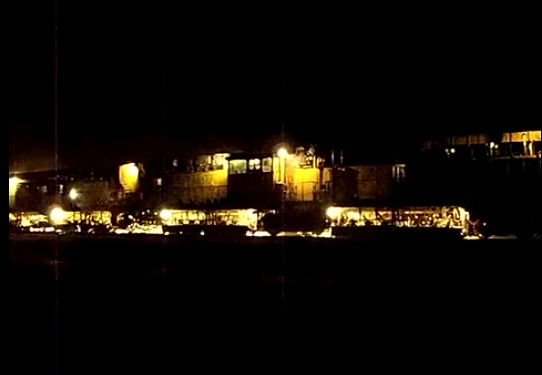(Words by Greg Rourke) – Steel wheels on steel rails is one of the most efficient ways to move freight. Trains over two miles long, with cars weighing 130 tons are common. Trains run 24/7 over 140,000 miles of track. It takes a lot of maintenance to keep the freight moving. That’s where the Trains From Hell come in.
All that weight pounding the rails messes up the profile of the rail. Ideally the rail and the train wheels have as much contact as possible. Grinding the rails restores the profile. What to do, whip out the ol’ Dewalt 9 inch angle grinder and a few miles of extension cord? Not hardly. Rail grinding trains restore the profile at about 20 miles per hour. A locomotive pulls the equipment with a few dozen electric motors with grinding stones set at different angles. Tank cars spray water in front of the grinders for lubrication, and behind the train to put out the inevitable fires. Living quarters for the crew are often included, as well as a caboose with a water cannon in case the under train sprayers don’t put out all the fires.
These babies put on quite a show. In daytime, they raise all sorts of dust, smoke and noise as they go about their business. At night is when the real spectacle happens. Spotlights all over and under the train light everything up so the crew can see to work, and the sparks really fly. Fire departments are often called by frantic folks insisting a flaming train is going through town. Signs on the train warn passersby not to get close, I’m guessing most people don’t have to be told twice.













Aptly titled Trains from Hell. That is cool!
This is nothing compared to the noise I heard one night coming from a broken locomotive passing behind the Fry’s Electronics in the City of Industry, California. The damn thing was making the most ungodly grinding and knocking noise I’ve ever heard. How I wish I had my camera with me.
That is an awesome answer to a question I never thought about.
I wonder if you can get those in HO gage? 🙂